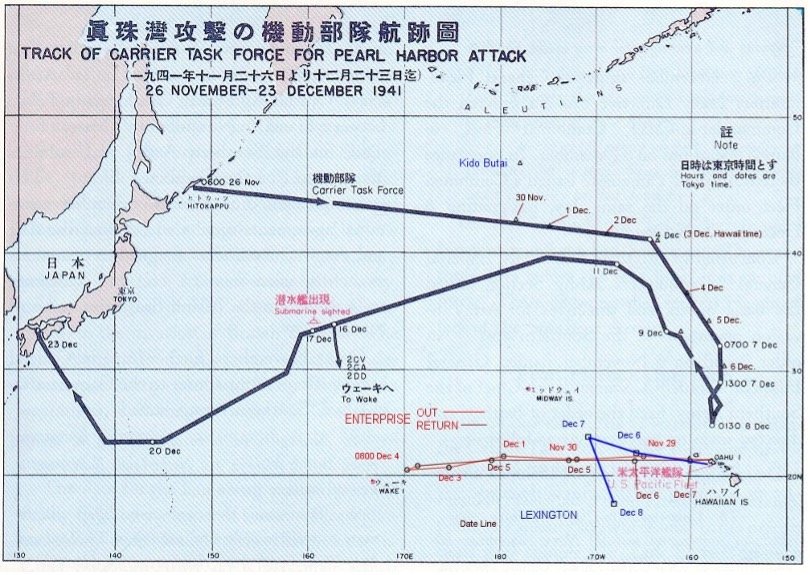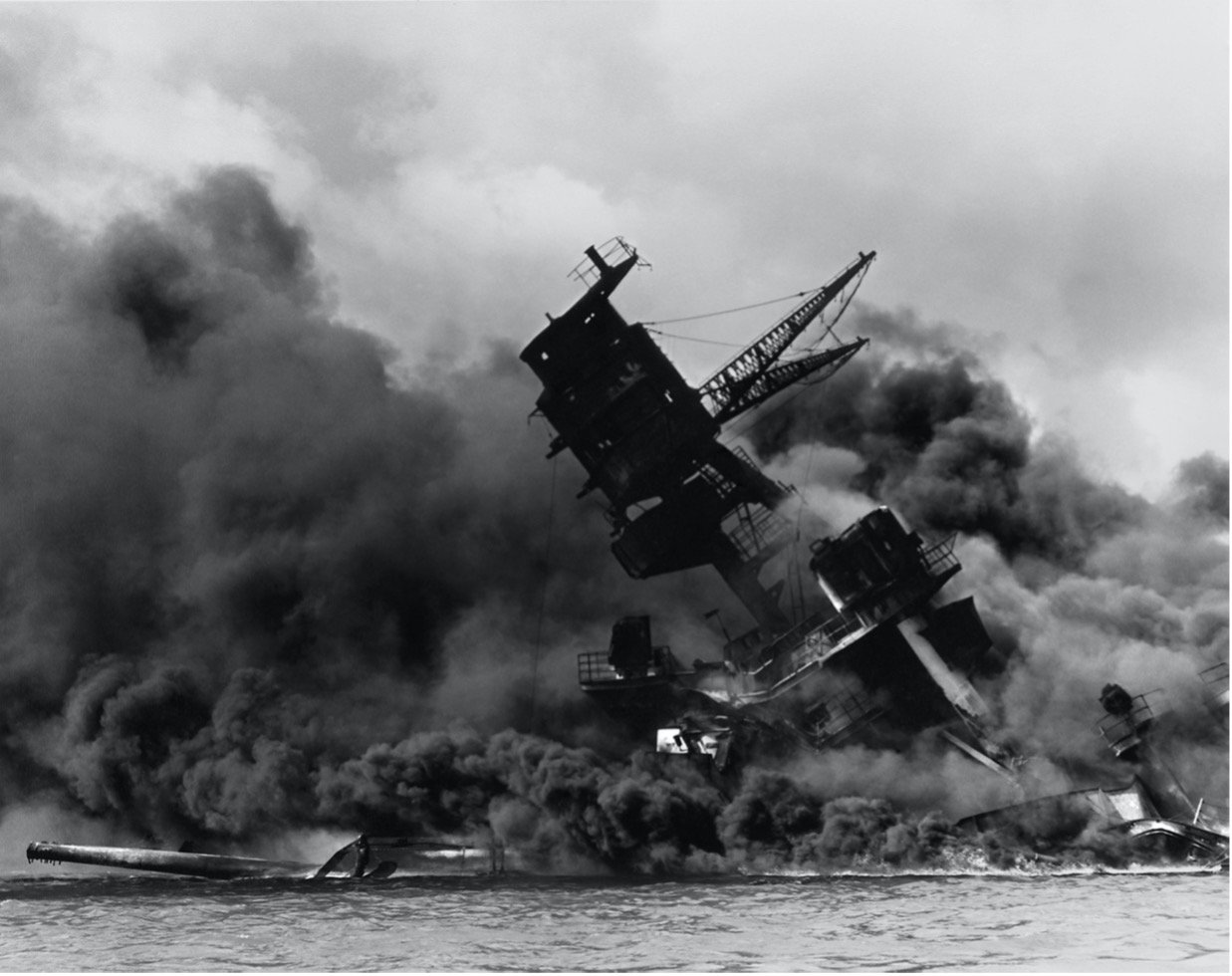A date which will live in infamy
Pearl Harbor May 29, 1962. (U.S. Navy)
December 7, 1941. 7:55a.m. Hawaii Time...It was supposed to be a beautiful morning. The temperature was quite mild for early December and as the sun rose over the island of Oahu, a handful of wispy clouds loomed on the horizon. Little did the denizens of Honolulu know that this serene landscape would serve as the backdrop to one of American history’s most brutal moments.
By 10:00a.m—just over two hours later— 2,403 Americans (including civilians) were dead and 1,143 lay wounded. Eight battleships were either sunk, capsized, or damaged and 188 U.S. aircraft were destroyed. The next day, President Franklin Delano Roosevelt declared war on Japan, thereby entering the United States into World War II. For eighty years now, people from all over the world have gathered at the USS Arizona Memorial at Pearl Harbor to pay their respects and honor the memory of those who served and sacrificed that morning and beyond.
From Hollywood blockbusters to nonfiction accounts, much has been written (and dramatized) about the attack on Pearl Harbor over the past eighty years. While distinguishing fact from fiction has been cause for much debate, the undisputed fact remains that Pearl Harbor was a true turning point in American history and changed our world as we know it irrevocably.
Air route followed by the Japanese fleet to Pearl Harbor and back from “Reports of General MacArthur.” Public domain.
At 6:10a.m. that morning, minesweeper USS Condor sighted the periscope of a Japanese submarine. Around the same time, the first wave of Japanese planes took off from their aircraft carriers about two-hundred miles north of Oahu. The USS Condor managed to warn the nearby USS Ward and the first shots fired by the United States during World War II would eventually be shot by the USS Ward at 6:45 when she attacked a periscope that was tailing the USS Antares. At 6:53, the Ward radioed Navy headquarters. By 7:02, the radar station at Oahu spotted an unidentified aircraft heading for Hawaii. Believing the oncoming aircrafts to be a flight of U.S. B-17 bombers coming across the Pacific from California, the warnings went unheeded.
Less than twenty minutes later, the United States would be under attack.
Armed with armor-piercing bombs or Type 91 torpedoes, the first Japanese offensive attack reached Oahu at 7:40. By 7:55a.m., preceded by the famous order, “Tora! Tora! Tora!,” the attack was underway.
In the first wave, Japanese fighters and dive bombers hit the major airfields and anti-air defenses on the west side of the island, before making it to Pearl Harbor. Meanwhile, thirteen of the forty torpedoes launched hit different ships. The battleship USS California was hit by two bombs and two torpedoes. Likewise, the USS Utah was holed twice by torpedoes while the USS West Virginia was hit by seven. The USS Oklahoma was hit by four torpedoes and later capsized. Other boats such as the USS Nevada were sunk in shallow water, while ships like the USS Maryland, Tennessee, and Pennsylvania were damaged. Men aboard awoke to the sound of alarms, exploding bombs, and gunfire, prompting several sleepy-eyed men to dress as they ran to their stations. With ammunition lockers being locked, guns being unmanned, and aircrafts parked wingtip to wingtip, onboard personnel did the best they could to ward off the attack. In fact, the destroyer USS Helm managed to fire at a Japanese submarine at the entrance to Pearl Harbor, thereby sinking it.
By around 8:45a.m. the attack appeared to be at an end, but this momentary relief was fleeting. Five minutes later, a second wave of planes arrived and launched a second offensive. During this attack, the destroyer USS Shaw was badly damaged and exploded in dry dock. Though many of the battleships damaged would return to active duty, the USS Oklahoma, the USS Utah, and the USS Arizona would not. In fact of the 2,335 military personnel killed, 1,177 were aboard the USS Arizona.
At 10:00a.m, just a few hours after the initial attack, all Japanese aircrafts had landed back in their carriers after accomplishing their mission of demobilizing the U.S. Pacific Fleet.
"A date which will live in infamy..."While tensions had been rising between the U.S. and Japanese governments, and many Americans in 1941 believed conflict with the Japanese was imminent, few could have predicted the magnitude of this attack. The European front of World War II opened up several strategic opportunities for the Japanese to overtake various European colonial holdings, including French Indochina (Vietnam). After the Japanese invaded Vietnam in 1941, the U.S. froze all Japanese assets and declared an embargo on petroleum shipments—which accounted for nearly eighty percent of Japan’s oil imports at the time.
With the eastern Pacific being devoid of adequate islands for a naval base, the Japanese army set their sights on Hawaii. In addition to there being limited space in the eastern Pacific, the Japanese knew that the British, Dutch, American, and French military in the region amounted to only 350,000 troops combined. The Japanese believed they could easily launch a series of coordinated attacks from their existing bases in the western Pacific islands and overwhelm the allied forces. They also hoped to undermine American morale so that the U.S. government would seek to negotiate a peace with Japan.
Though the Japanese would lose 55 men on the morning of December 7, 1941, the U.S. lost 2,335 military personnel (2,008 navy, 109 marines, and 218 army), and 68 civilians (including nine members of the Honolulu Fire Department). Against the plans of the Japanese, the U.S. Congress declared war on Japan (and under the Tripartite Pact, Germany and Italy) on December 8, launching the United States into World War II.
The USS Arizona burning after the attack on Pearl Harbor. Unknown. (National Archives and Records Administration)
"Remember Pearl Harbor..."For eighty years, the attack on Pearl Harbor has been remembered in various ways. From the classic novel turned film From Here to Eternity to several non-fiction documentaries and books, the event has become a mainstay of American history and culture.
On Memorial Day 1962, the USS Arizona Memorial was dedicated to commemorate the attacks and the brave souls who died defending it. In 1989, the ship was dedicated a national historic landmark, which the National Park Service, alongside many Veterans, have worked hard to maintain. The memorial now attracts roughly 1.4 million visitors a year.
Every 7th of December however, Pearl Harbor survivors, their families, and current and former active military members gather at the USS Arizona National Memorial to remember those who lost their lives and to reflect on the legacy of that day. Though few survivors are still with us, it’s important to remember their sacrifices and historical impact of the attacks not just once every December, but all year long as well.


